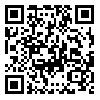Volume 14, Issue 5 (2017)
ioh 2017, 14(5): 85-94 |
Back to browse issues page
Download citation:
BibTeX | RIS | EndNote | Medlars | ProCite | Reference Manager | RefWorks
Send citation to:



BibTeX | RIS | EndNote | Medlars | ProCite | Reference Manager | RefWorks
Send citation to:
mohebian Z, Dehghan H. The relationship of sleep quality and mental fatigue in different levels of lighting on attention and reaction time in thermal comfort condition. ioh 2017; 14 (5) :85-94
URL: http://ioh.iums.ac.ir/article-1-1959-en.html
URL: http://ioh.iums.ac.ir/article-1-1959-en.html
Department of Occupational Health Engineering , ha_dehghan@hlth.mui.ac.ir
Abstract: (5290 Views)
Background and aims: In accomplishing attention-consuming tasks, mental fatigue reduces productivity and increases error rate as the factors involved in work accidents. The present research goal was to study the effects of sleep quality and mental fatigue on attention and reaction time in the thermal comfort condition.
Methods: This experimental research was conducted on 33 university students in thermal stress chambers. The participants were exposed to 500, 200, and 1500 lx lightings for 1.5 hours at the 22 temperature to take the continuous performance test (CPT) (which assessed attention) and the reaction time test (which measured their reaction time), and complete the Pittsburgh Sleep Quality Inventory (PSQI) and the mental fatigue checklist. The collected data was analyzed in SPSS 20 using the multiple linear regression analysis and Pearson’s correlation coefficient methods.
Results: There was a significant relationship between levels of mental fatigue before and after exposure to 200 and 500lx lightings, and the highest level of mental fatigue was observed with the 200 and 500lx lightings (P˂0.05). The relationship of mental fatigue before exposure to the 200lx lighting with the error rate and reaction time was significant (P˂0.05). The relationship of mental fatigue after exposure to the 500lx lighting and the two-sound selective reaction time was significant (P˂0.05). The relationship of sleep quality was not significant in the CPT (continuous performance test) test (P˃0.05), but the relationship of sleep quality with the diagnostic reaction time (with the 200lx lighting) and the two-color selective reaction time (with the 500lx lighting) was significant (P˂0.05).
Conclusion: Research findings revealed that error rate, reaction time, and the inability to think increased because of extreme mental fatigue, inadequate lighting, and low sleep quality. Hence, it is necessary to optimize the heat and lighting of the workplace environments for positions that require attention, concentration and reaction to stimuli based on the sleep quality and mental fatigue levels.
Methods: This experimental research was conducted on 33 university students in thermal stress chambers. The participants were exposed to 500, 200, and 1500 lx lightings for 1.5 hours at the 22 temperature to take the continuous performance test (CPT) (which assessed attention) and the reaction time test (which measured their reaction time), and complete the Pittsburgh Sleep Quality Inventory (PSQI) and the mental fatigue checklist. The collected data was analyzed in SPSS 20 using the multiple linear regression analysis and Pearson’s correlation coefficient methods.
Results: There was a significant relationship between levels of mental fatigue before and after exposure to 200 and 500lx lightings, and the highest level of mental fatigue was observed with the 200 and 500lx lightings (P˂0.05). The relationship of mental fatigue before exposure to the 200lx lighting with the error rate and reaction time was significant (P˂0.05). The relationship of mental fatigue after exposure to the 500lx lighting and the two-sound selective reaction time was significant (P˂0.05). The relationship of sleep quality was not significant in the CPT (continuous performance test) test (P˃0.05), but the relationship of sleep quality with the diagnostic reaction time (with the 200lx lighting) and the two-color selective reaction time (with the 500lx lighting) was significant (P˂0.05).
Conclusion: Research findings revealed that error rate, reaction time, and the inability to think increased because of extreme mental fatigue, inadequate lighting, and low sleep quality. Hence, it is necessary to optimize the heat and lighting of the workplace environments for positions that require attention, concentration and reaction to stimuli based on the sleep quality and mental fatigue levels.
Type of Study: Research |
Subject:
Ergonomics
Received: 2016/11/20 | Accepted: 2017/08/19 | Published: 2018/01/7
Received: 2016/11/20 | Accepted: 2017/08/19 | Published: 2018/01/7
Send email to the article author
| Rights and permissions | |
 |
This work is licensed under a Creative Commons Attribution-NonCommercial 4.0 International License. |





